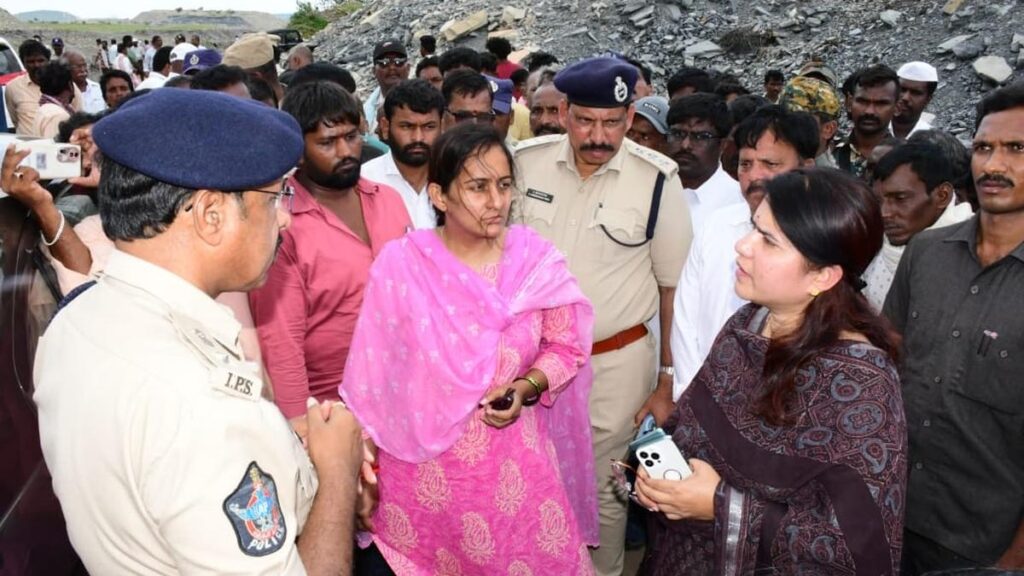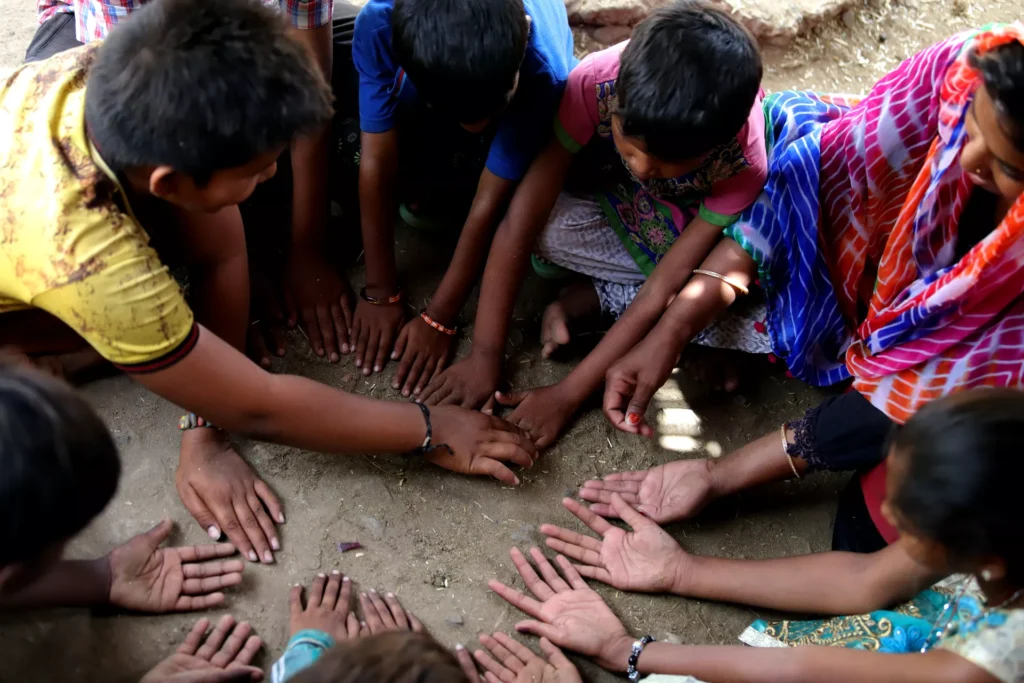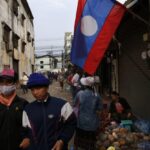
An eight-year-old girl in Andhra Pradesh’s Nandyal district was subjected to penetrative sexual assault and murder by three school seniors, all minors.
The perpetrators callously disposed of her body in a canal in an attempt to hide their heinous crime, according to India Today.
The victim, a third-grade student, was reported missing by her father on Sunday after she disappeared while playing in the park. Two of the accused, aged 12, are in the sixth grade, while the third, aged 13, is in the seventh grade.
The incident transpired on Sunday in Pagidyala, but the police only discovered the crime on Wednesday after arresting the suspects.
Despite conducting extensive hunts in Muchumarri Park and questioning locals for information, the police could not locate the girl. They then enrolled the help of a sniffer dog to assist in the operation.
The dog’s clues led the police to the places of the three minor boys, who were arrested after an initial investigation. During interrogation, the boys confessed to assaulting and murdering the young girl.
According to their statement, the boys noticed the girl playing near Muchumarri Park. They invited her to play a game, to which she agreed. They then took her to a remote area near the Muchumarri irrigation project, where they assaulted her.
Worrying that the girl would report the assault to her parents, the boys decided to kill her. They then disposed of her body in a nearby canal and fled the scene.
As the body remained untraceable, the police grilled the boys once again, who abode to have disposed of the body in the canal, forcing the police to search more profoundly in the canal.
Meanwhile, the Member of Parliament (MP) of Nandyal constituency, Byreddy Shabari, accompanied by Collector G. Rajakumari and Superintendent of Police K. Raghuveer Reddy, arrived at the village and found details of the incident from the victim’s families. She also consoled them and offered to render justice to the grieving family.

RELATED: What you need to know about the Sandeshkhali land-grabbing and sexual harassment scandal
RELATED: How rape survivors in India end up marrying their rapists
Combating violence against children
Tragically, millions of children in India, like the young girl in this case, are exposed to various forms of violence, exploitation, and abuse every day.
The perpetrators are often known to the child, including parents, family members, caretakers, teachers, and other children.
Violence against children not only threatens their survival and health but also affects their emotional well-being and future opportunities.
In India, violence against children is widespread and remains a harsh reality for millions. Globally, over half of all children have experienced severe violence, with 64% of these cases occurring in South Asia.
Every child has the right to be protected from violence, exploitation, and abuse. Despite this, millions of children worldwide, regardless of socio-economic background, age, religion, or culture, suffer from these issues daily.
Violence can take physical, sexual, and emotional forms and is often embodied as neglect. It can be interpersonal or result from societal structures that allow or promote violent behaviour.
Evidence indicates that violence, exploitation, and abuse are often perpetrated by someone the child knows, including parents, other family members, caretakers, teachers, employers, law enforcement authorities, state and non-state actors, and other children.
These harmful acts occur in homes, families, schools, care and justice systems, workplaces, and communities. They are dominant in various contexts, including conflict and natural disasters.
Many children face different forms of violence, including sexual abuse and exploitation, armed violence, trafficking, child labour, gender-based violence, bullying, gang violence, female genital mutilation/cutting, child marriage, and violent child discipline.
With the expansion of internet access, violence against children has taken new forms, such as cyberbullying and online sexual exploitation, which have damaging and life-changing consequences.
Data on the number of children experiencing violence likely underestimates the problem since only a tiny fraction of these acts are reported and investigated, and few perpetrators are held accountable.
There is ample evidence that violence, exploitation, and abuse can have short- and long-term effects on a child’s physical and mental health, impair their ability to learn and socialize, and negatively impact their transition to adulthood, leading to adverse outcomes later in life.
Governments, policymakers, and child-focused organizations like UNICEF have a responsibility to create safe environments for children and protect survivors of violence.
Children should grow up in a safe and protective environment, and governments, communities, local authorities, and non-governmental organizations, including faith-based and community-based organizations, can help ensure this.
Many successful experiments in India and globally show that prevention is the best approach to ending violence.
Promoting personal safety among children, implementing child protection policies in schools, and increasing parental awareness are crucial to preventing the sexual abuse of children.
Younger children are particularly vulnerable, and specific approaches are needed to boost the protective roles of families and educational environments.
Understanding the underlying causes of violence and addressing its interconnectedness is vital to ending violence against children.
Child protection systems aim to address the full spectrum of risk factors in the lives of children and their families.
Alongside partners, including governments, NGOs, civil society actors, and the private sector, UNICEF strengthens all elements of child protection systems, including human resources, finances, laws, standards, governance, monitoring, and services.
Role of UNICEF in preventing violence against children

UNICEF and its partners support the mapping and assessment of child protection systems, helping build consensus among government and civil society on the goals and components of these systems, their strengths, weaknesses, and priorities for action.
This process improves laws, policies, regulations, standards, and services protecting all children. It also strengthens these systems with the necessary financial and human resources to deliver results for children.
Over the past decade, UNICEF has worked to understand and change social norms that result in violence, exploitation, and abuse.
UNICEF engages in advocacy and awareness-raising, supporting discussions, education programs, and communication for community, district, state, and national development strategies to promote positive norms and end harmful practices.
Focusing on community values and human rights leads to positive and lasting change combined with effective legislation, policies, regulations, and services.
This focus on the prevention and response to violence, exploitation, and abuse spans the entire lifecycle of the child.
From a human rights, moral, and economic perspective, it is crucial to invest in child protection systems to prevent and respond to all forms of violence against children.
UNICEF collaborates with government and civil society actors to enhance the capacity of the workforce to better protect children from violence.
This includes working with universities to develop or improve degree programs in social services and integrate child protection modules into existing courses for the police and judiciary.
UNICEF also supports those already working in the field to ensure access to new tools and resources necessary for implementation.
Engaging with communities and families to recognize violence and support positive practices, such as positive discipline, is also part of UNICEF’s program.
Enabling communities to stand up to violence and report it is an essential first step. The most effective way to address violence is to prevent it from occurring in the first place.





